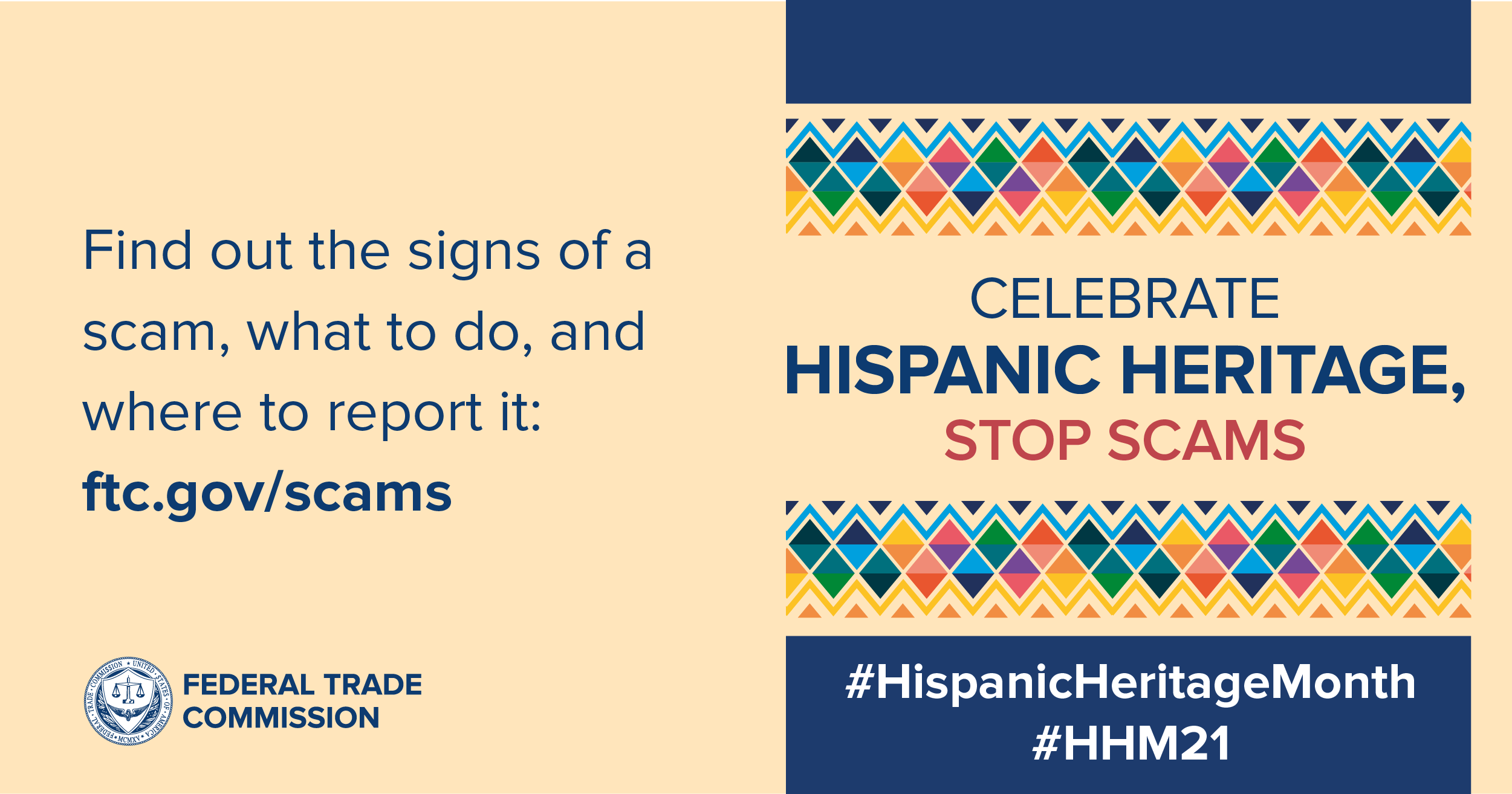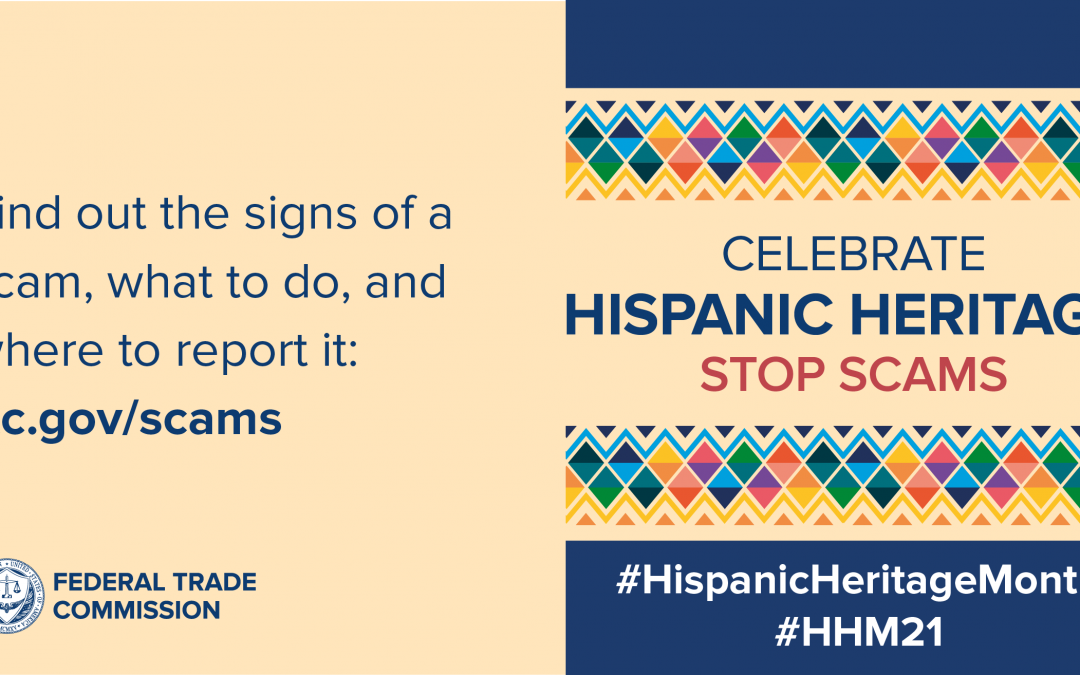This article was originally posted by the FTC. See the original article here.
 Each year, Hispanic Heritage Month celebrates the numerous contributions that Hispanic Americans and Latinos have made to our country. This year’s theme, Esperanza: A Celebration of Hispanic Heritage and Hope, encourages us to look forward to future contributions with optimism, hope, and a sense of community.
Each year, Hispanic Heritage Month celebrates the numerous contributions that Hispanic Americans and Latinos have made to our country. This year’s theme, Esperanza: A Celebration of Hispanic Heritage and Hope, encourages us to look forward to future contributions with optimism, hope, and a sense of community.
In honor of Hispanic Heritage Month, we’ll focus on ways to come together to help spot, stop, and report frauds that target Latino communities. Today kicks off our month-long series with advice that we hope you’ll share with others on how to recognize and avoid scams.
The FTC Consumer Fraud Survey showed that Latinos are more likely to experience fraud than non-Hispanic whites. Over the past year, that probably means dealing with a scammer who pretended to be someone they’re not, like a government official, a known business, or a family member or friend. The top scam reported to the FTC in 2020 was impersonator scams like these, with nearly 500,000 reports and a median loss of $850.
Check out ftc.gov/scams for the latest advice about How To Avoid a Scam, including how to recognize four common signs of a scam. You’ll also find tips to recognize and avoid impersonators who claim to be from the Social Security Administration, the FTC, the IRS, Medicare, or another government agency.
If you were scammed, it’s important to act as soon as you realize it. First, find out what to do if you paid a scammer, gave a scammer your personal information, or if a scammer has access to your computer or phone.
Then, take a few minutes to report the scam at ReportFraud.ftc.gov. After you report it, you’ll get advice on what you can do next to recover and protect yourself.
And sharing your experience with the FTC helps us alert communities about scams we’re hearing about. The more we hear about scams, the more we can do to spread the word.
Brought to you by Dr. Ware, Microsoft Office 365 Silver Partner, Charleston SC.



Recent Comments